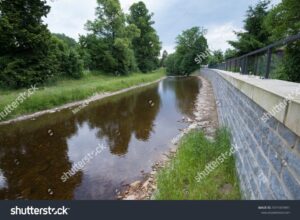Floods are generally caused by excessive rainfall. The normal rainwater flows down the river to the sea. But when the rain is too heavy for this, the river overflows the land on either side. Sometimes a flood is caused by the sudden melting of large masses of snow in the mountains. Occasionally the pressure of the river- water breaks an embankment and the water rushes into the land on the other side.
There is no gainsaying the fact that the fury and ferocity of floods, year after year, play havoc, not only with the rich soil and standing crops but also with human as well as animal life. Every time, when floods overwhelm vast areas of cultivable land and residential areas, the losses in terms of life, natural resources, and the erosion of rich land run to millions. One of the biggest challenges that we have failed to face squarely is the area of ‘proper water management’, both perennial as well as seasonal. Suppose we have really learned anything from the past when floods had been causing enormous damage to the farmers, their fields, heart, and homes. In that case, the following measures should be given serious thought and if found practicable, should be implemented in stages in those areas that are more prone to floods.
A national plan to control floods and also the launching of a technology mission to regulate them can be considered and put through. Since floods occur when the run-off water from the catchment areas exceeds the bank capacity of the river, we can store the run-off water in reservoirs and tanks and release it after the river recedes, thus feeding the fields with water when it is required the most.
Before the onset of rains desilting of canals, channels, drains, etc should be undertaken as a priority operation and not as a half-hearted ad hoc course of action. Construction of small dams to conserve surplus water can be taken hand because the usefulness of big dams in terms of water management, ecological balance, and rehabilitation of uprooted persons has become more controversial than a straightforward solution to the problem.
By bringing more land under green cover, we can minimize the risk of the rushing waters of rivulets, dents, streams, and the like, making dents and cleavages into the soil. Additional cushions can be built in the existing dams to accumulate run-off water that can be used during the dry season. Like the ‘national power grid’, establishing a ‘national water grid’, can be thought of.
See also: ISRO chief: Chandrayaan-3 will launch in the middle of July


